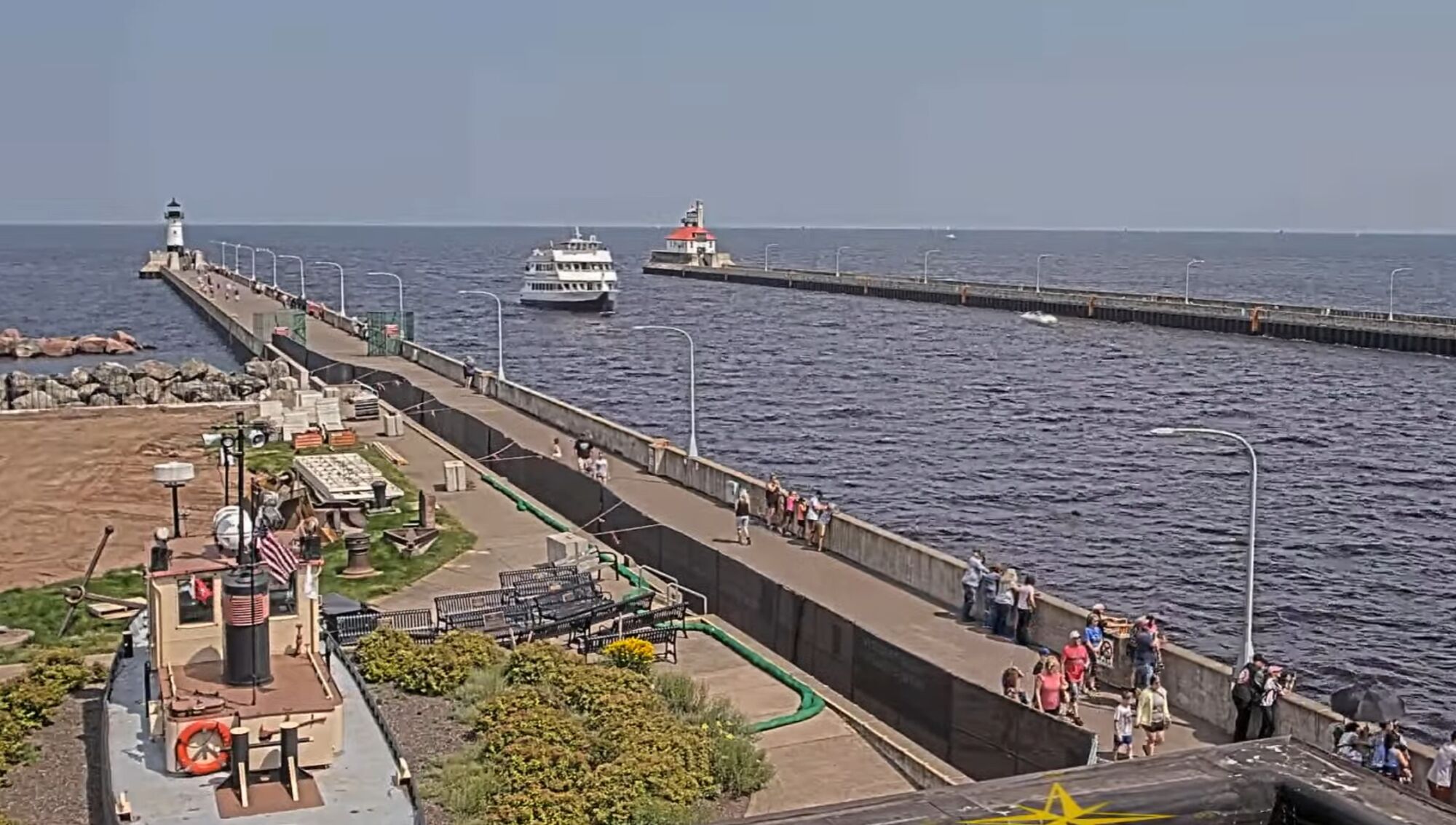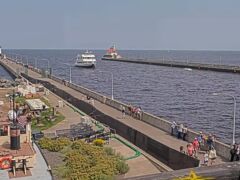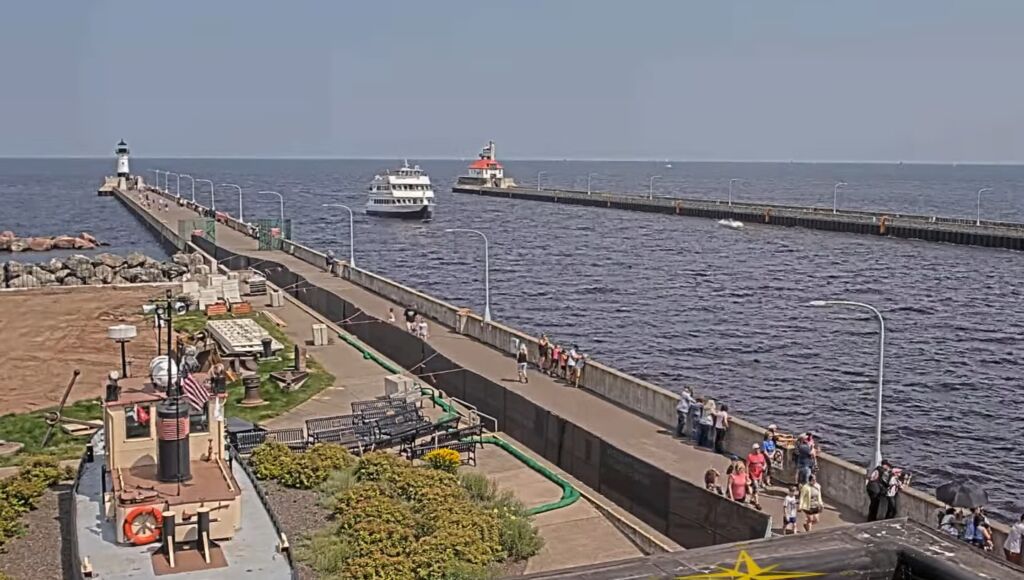free
Country:
Region:
Value:
Visit duration:
Price (adult):
free
Why Top:
A Minnesota shipping canal with iconic aerial lift bridge. The gateway to the largest Great Lakes port, where you can watch massive ships pass under the lift bridge.
Description:
An artificial canal was cut through Minnesota Point to provide direct access from Duluth Harbor to Lake Superior. It became a vital infrastructure element that helped transform the city into a major transportation hub. The canal is flanked by concrete breakwaters and spanned by the iconic lift bridge connecting the peninsula to the city.
Facts:
The canal handles around 1,000 vessels annually. The first ship passed through in 1871. Documentaries about shipping have been filmed here
Significance:
Regional and national significance. Maintained by the U.S. Army Corps of Engineers
Categories:
Why visit:
Interesting:
Fitness level:
Best visit time:
Do:
photography
relaxing
ship watching
visiting museum
Walking
Walking
Access:
Roads:
Facilities:
Attendance:
Emergency:
911
Info:
Safety:
Generally safe, but be cautious near water and during strong winds.
Clothing:
Light clothing and windbreaker in summer, jacket in spring and fall, warm clothes in winter.
Climate:
Humid continental, cool summers, snowy winters.
Tips:
Visit in the morning to avoid crowds and check ship schedules in advance.
Connection:
Ok
- Rising prices for travel in Germany in 2025: reasons, scale and consequences
- Brest (Belarus)
- Sumatra
- Alaska
- Gibraltar
- Tourist view on the history of the Basmachi: traces of the past in travels across Central Asia
- Wrangel Island
- Travel to Cambodia
- The European Airline Ticket Market in 2025: Digitalization, Flexibility, and Emerging Challenges
- Honduras
- The September 11 Terrorist Attack: How the Tragedy Changed Tourism
- Ecuador
- The World’s Most Dangerous Countries for Tourism in 2025
- Bosphorus
- Kenya Nchi Yangu Song
- How to follow Donald Trump’s travel trail
- Forest Elephants May Return to Nyungwe National Park
- Cod Wars
- Scythians
- Mammoths and travel: where to see habitats, traces and digs, and museums














